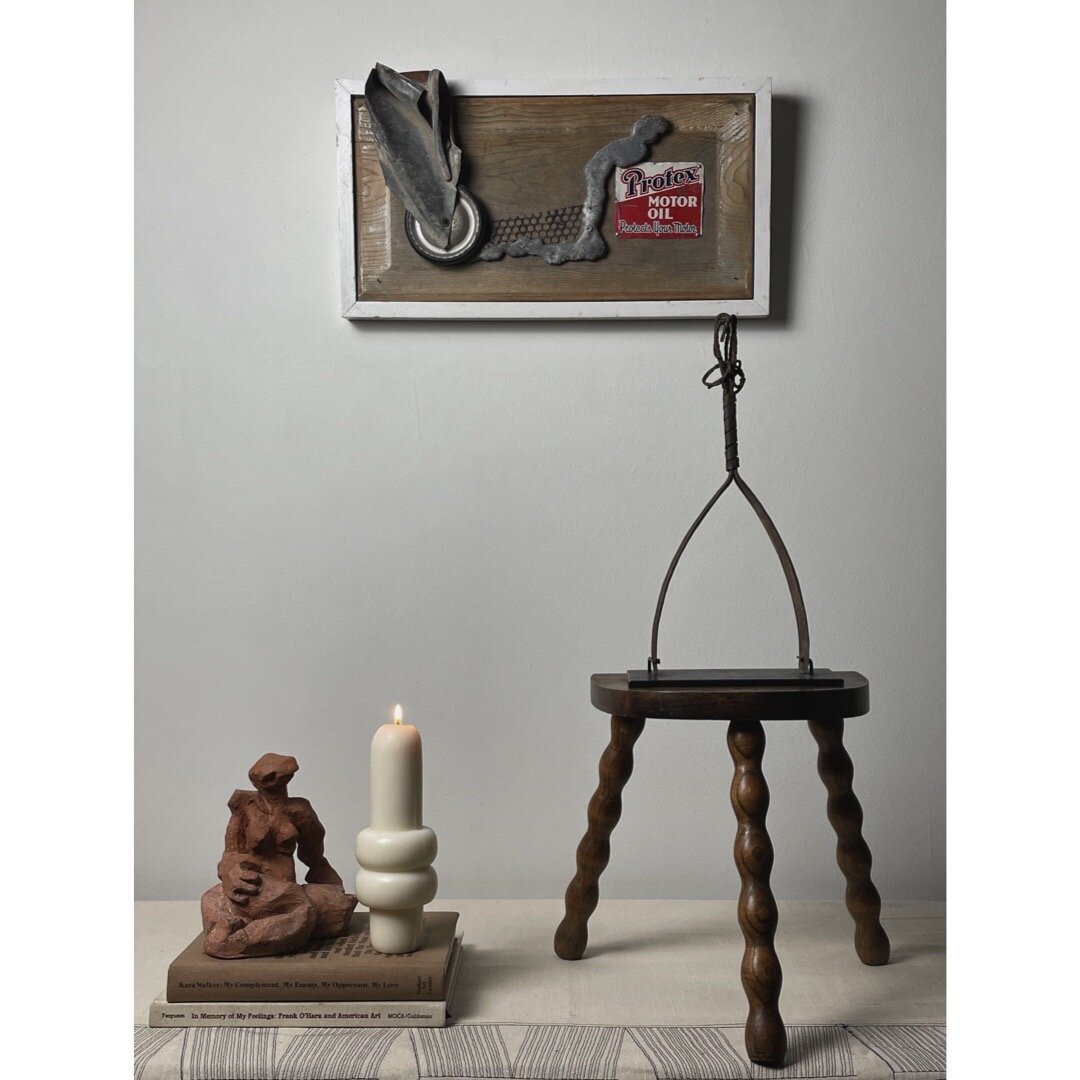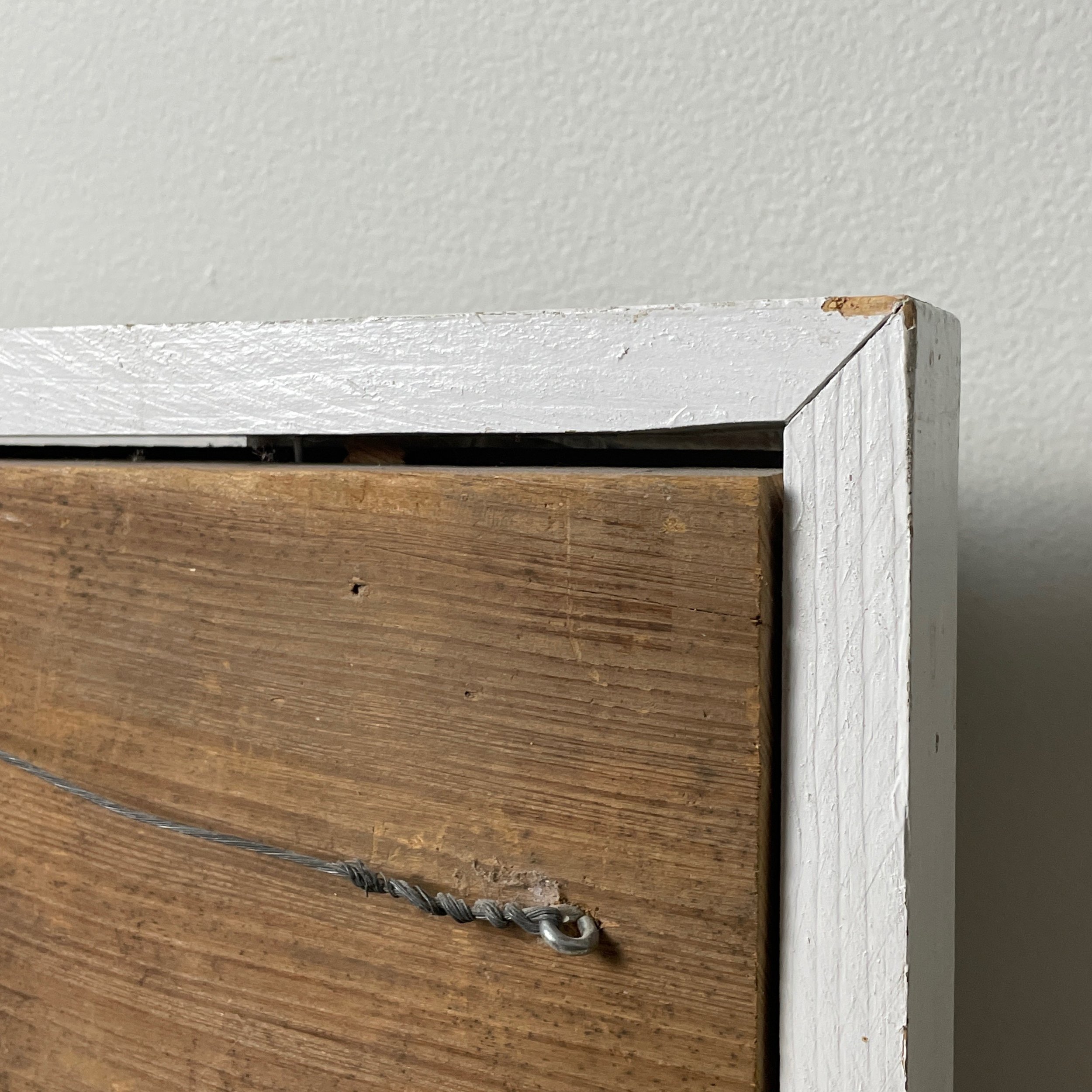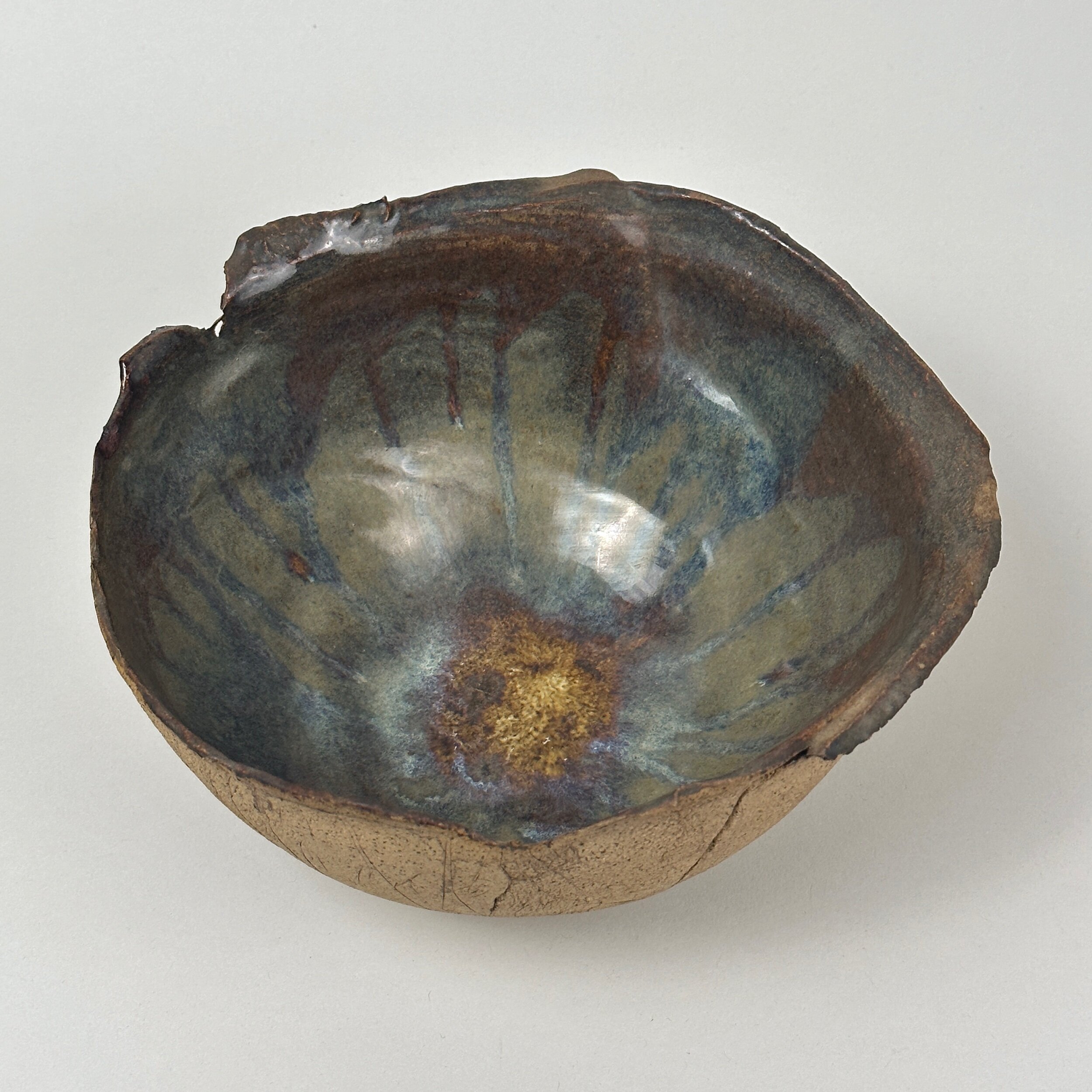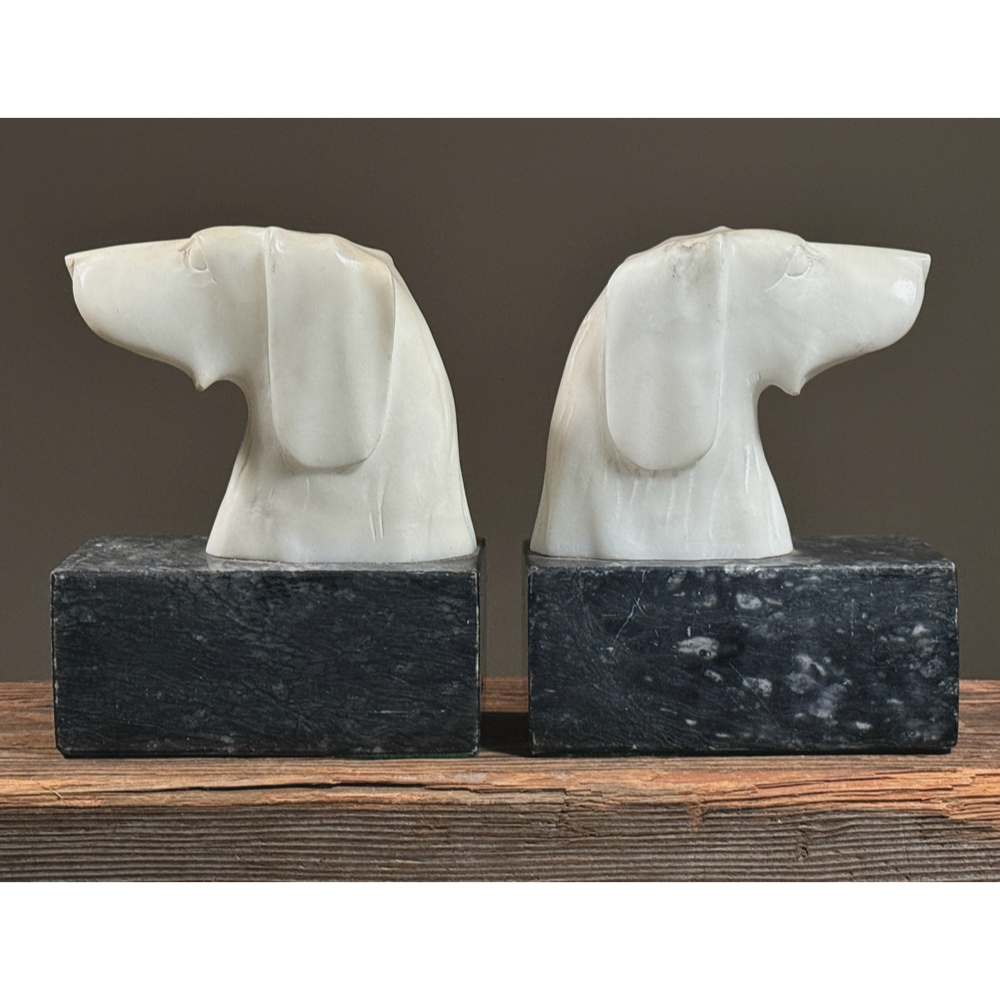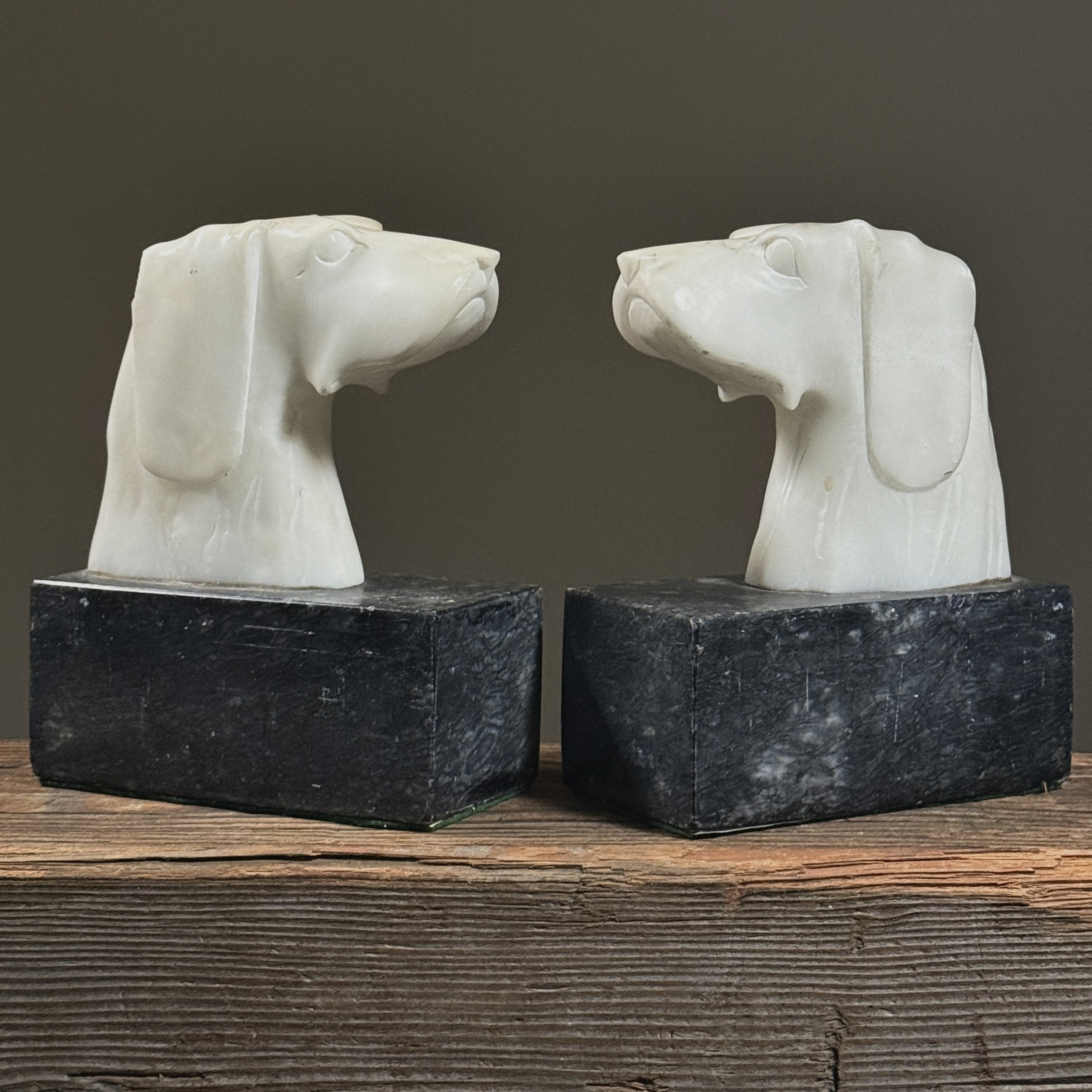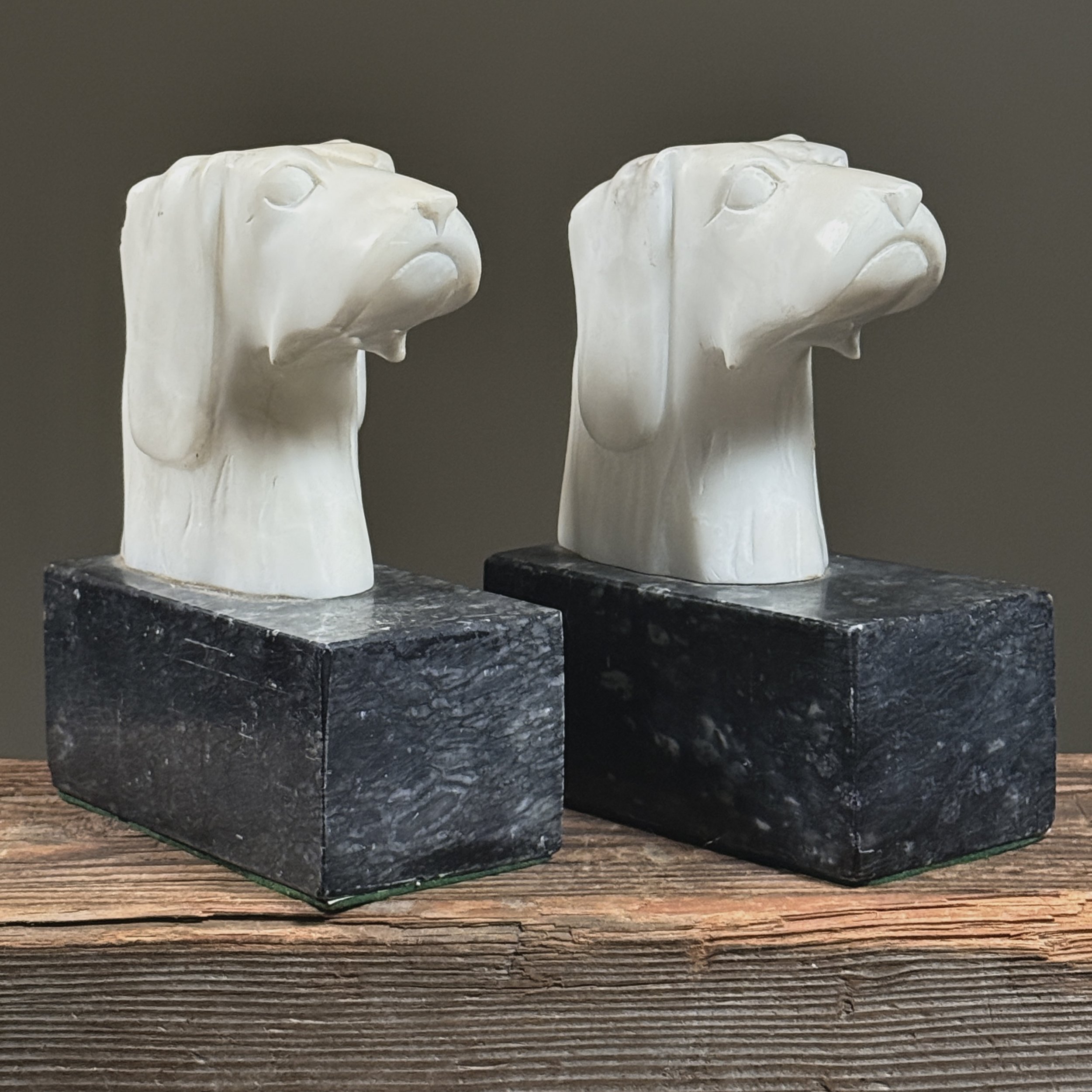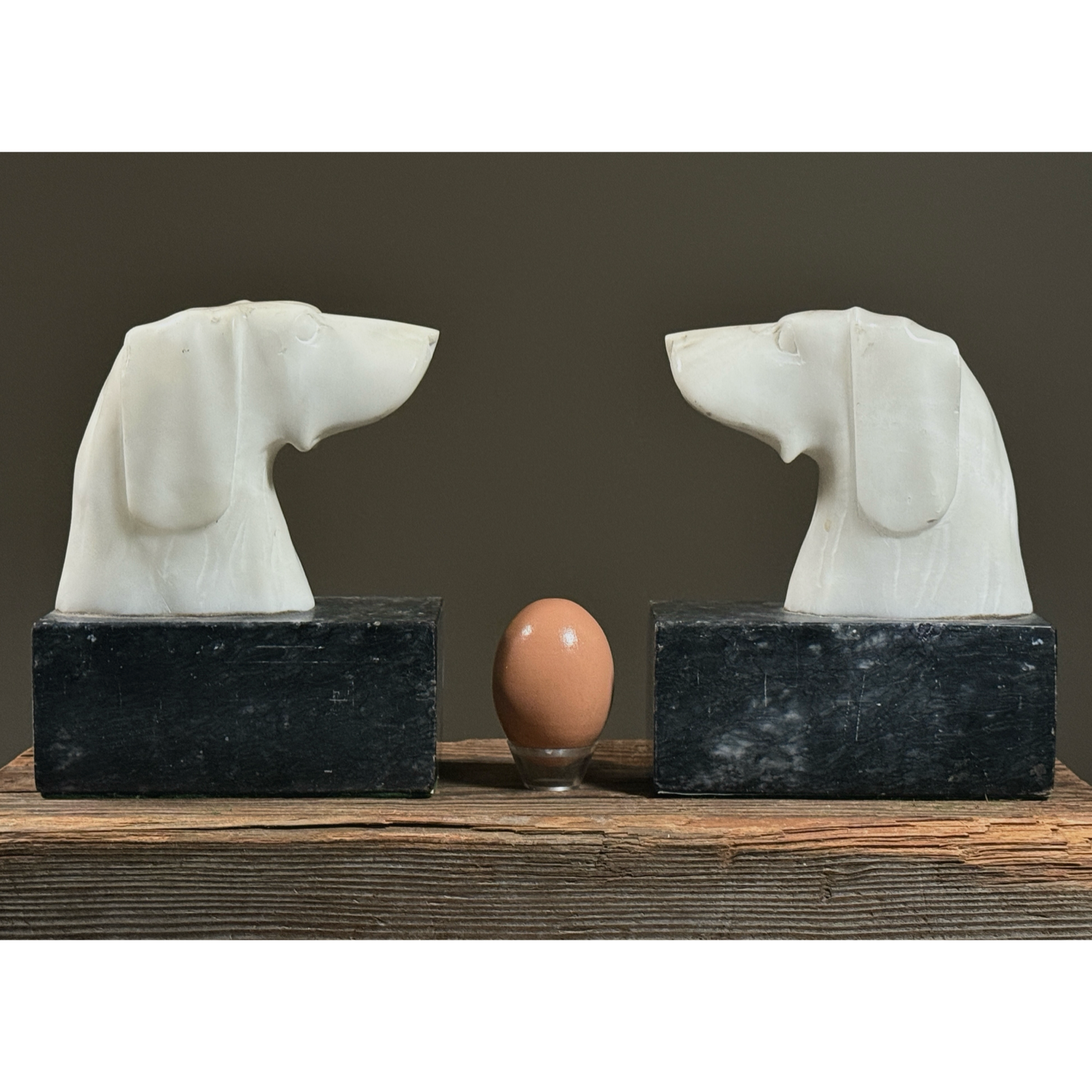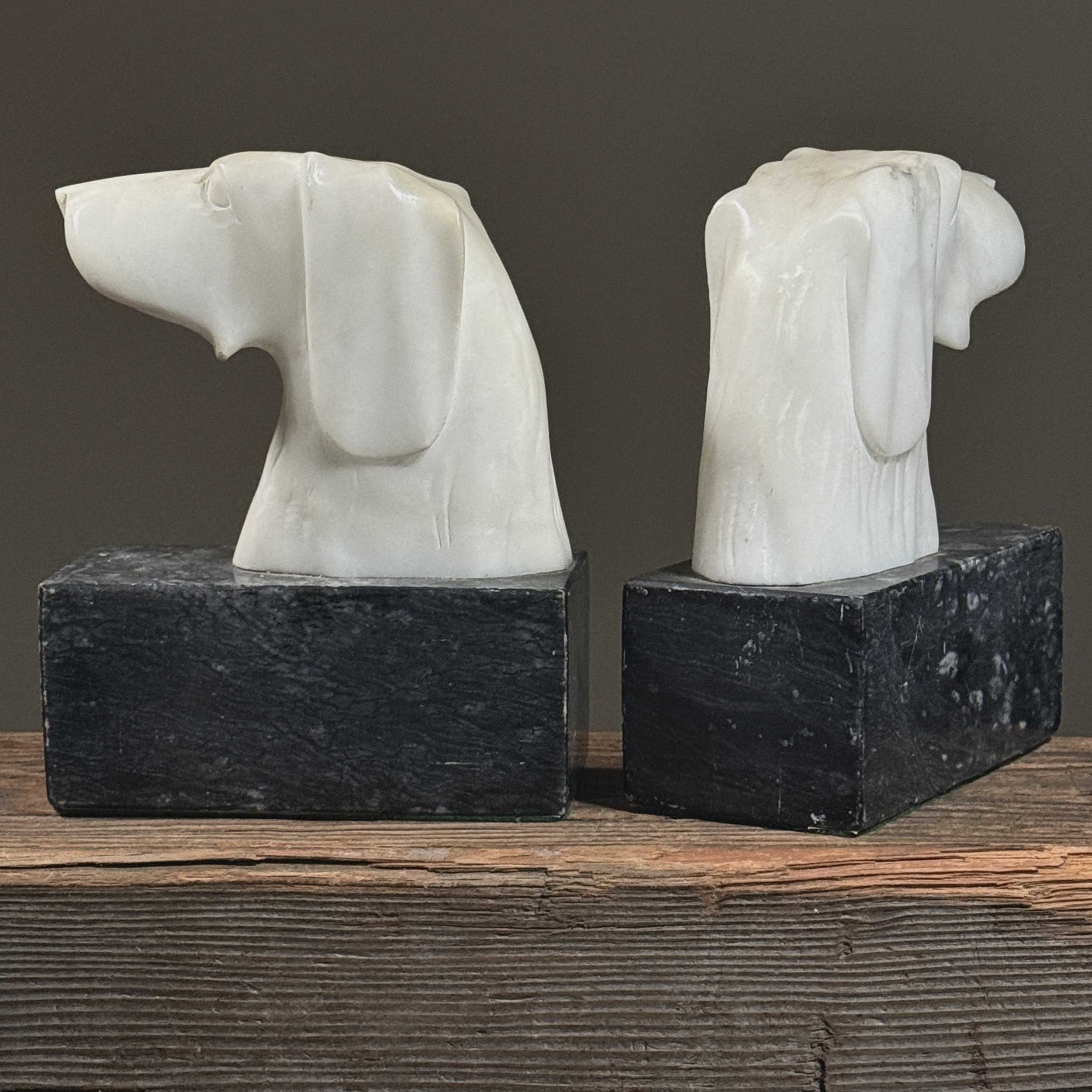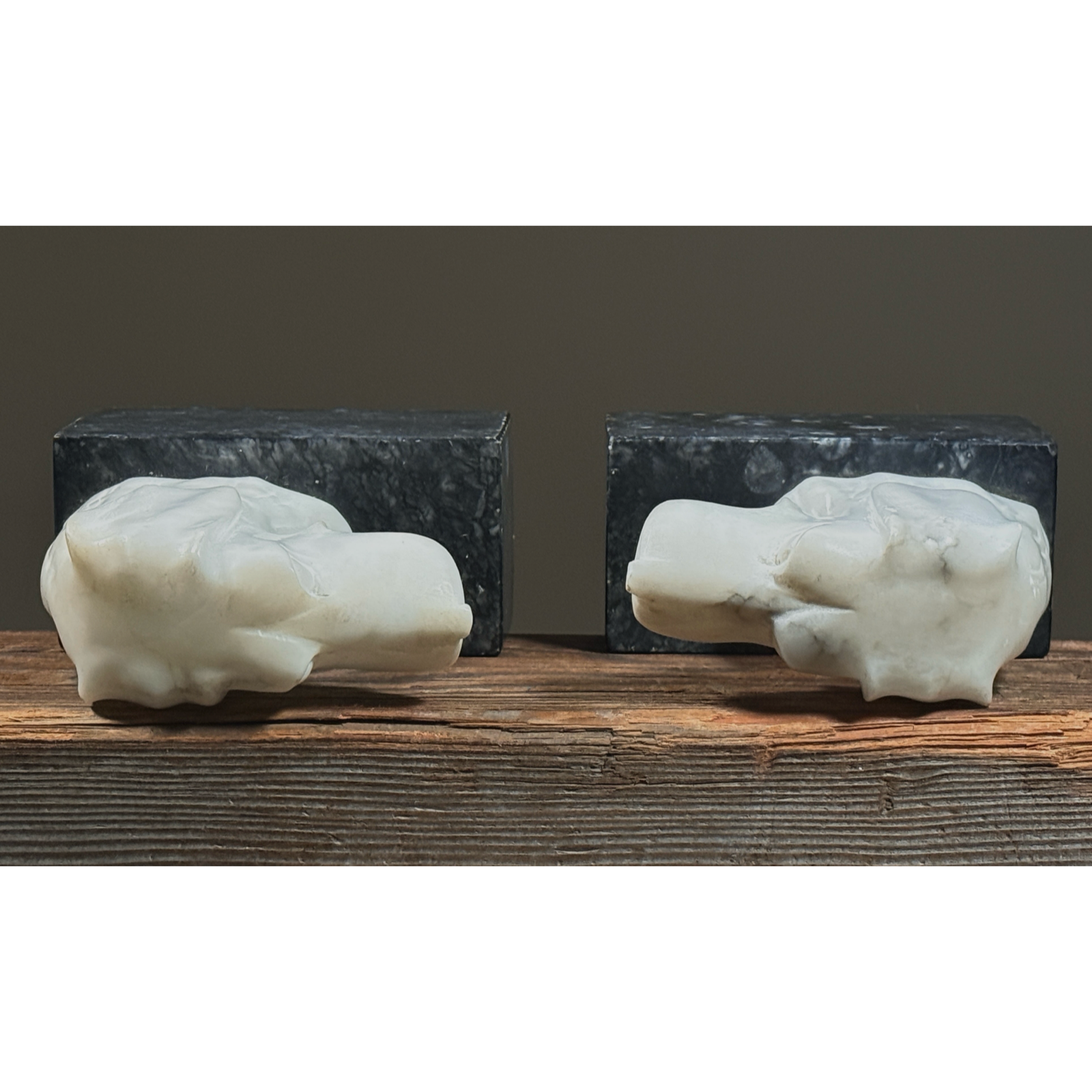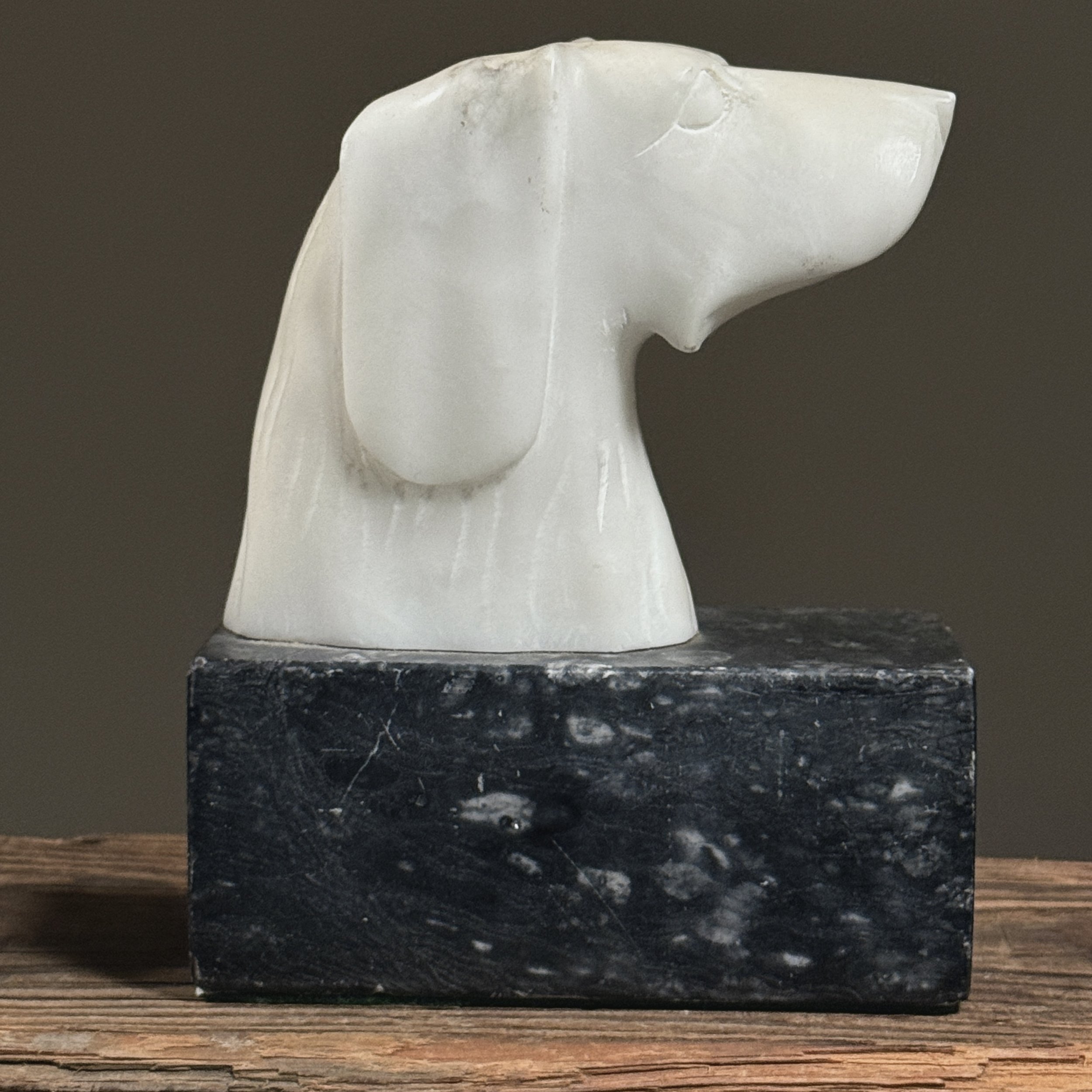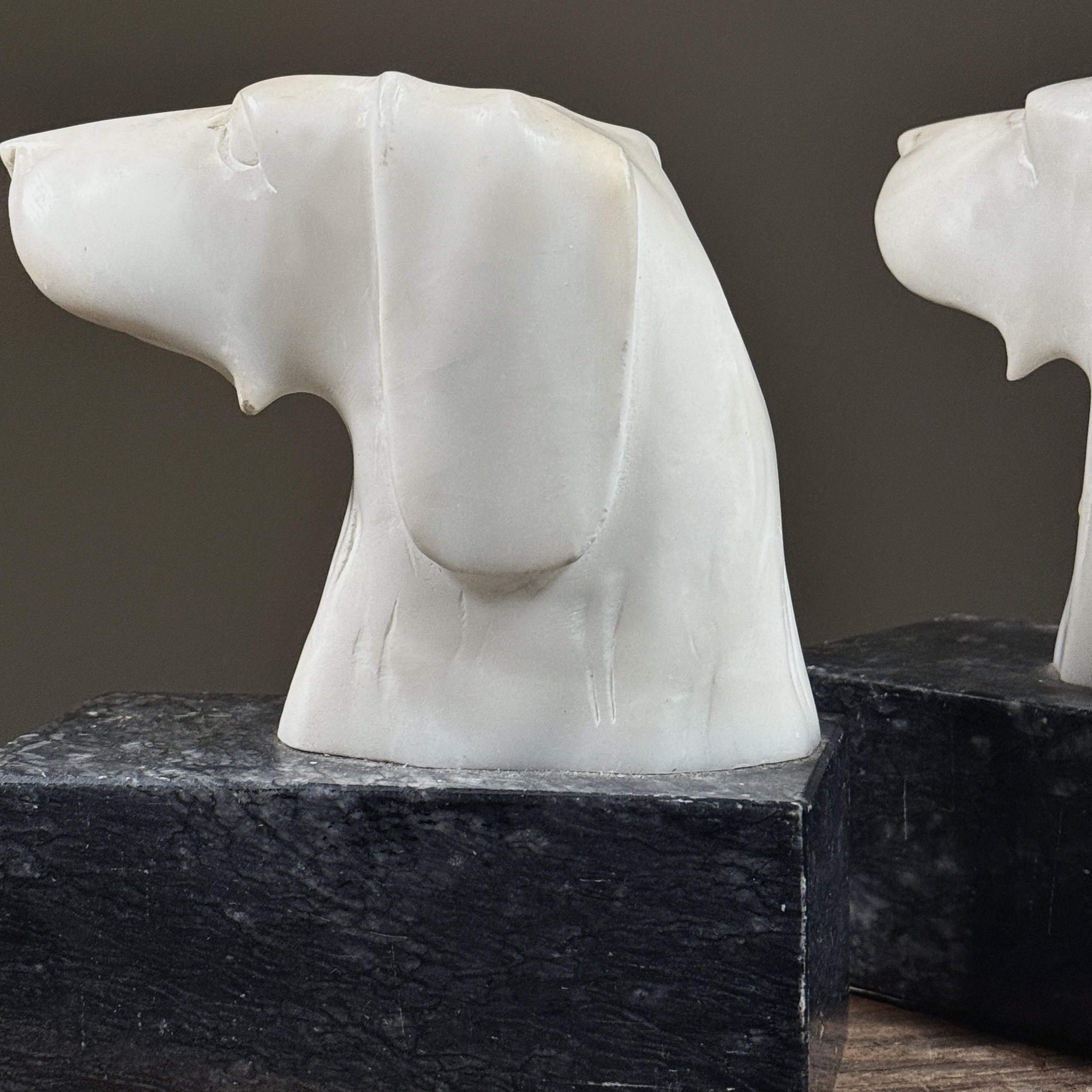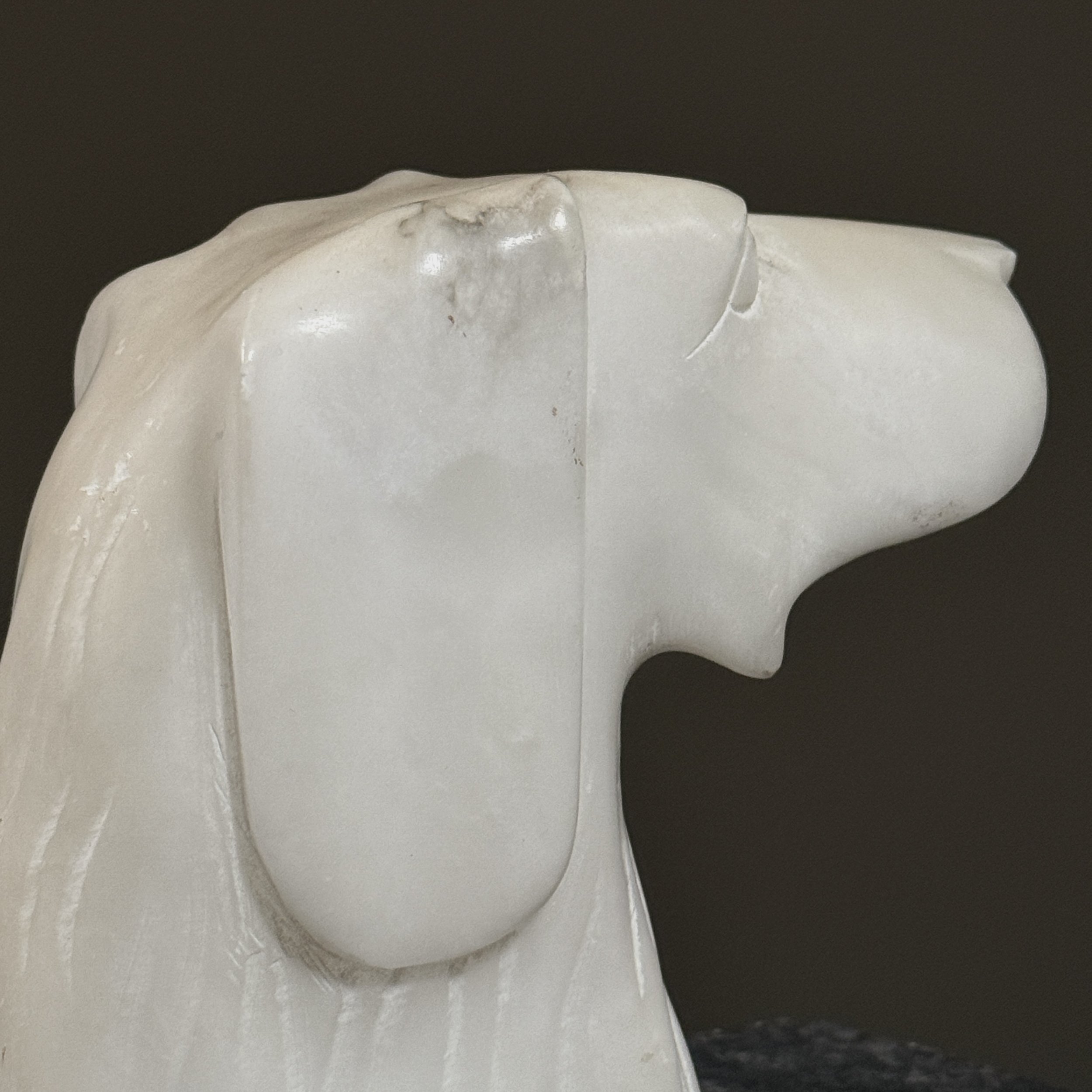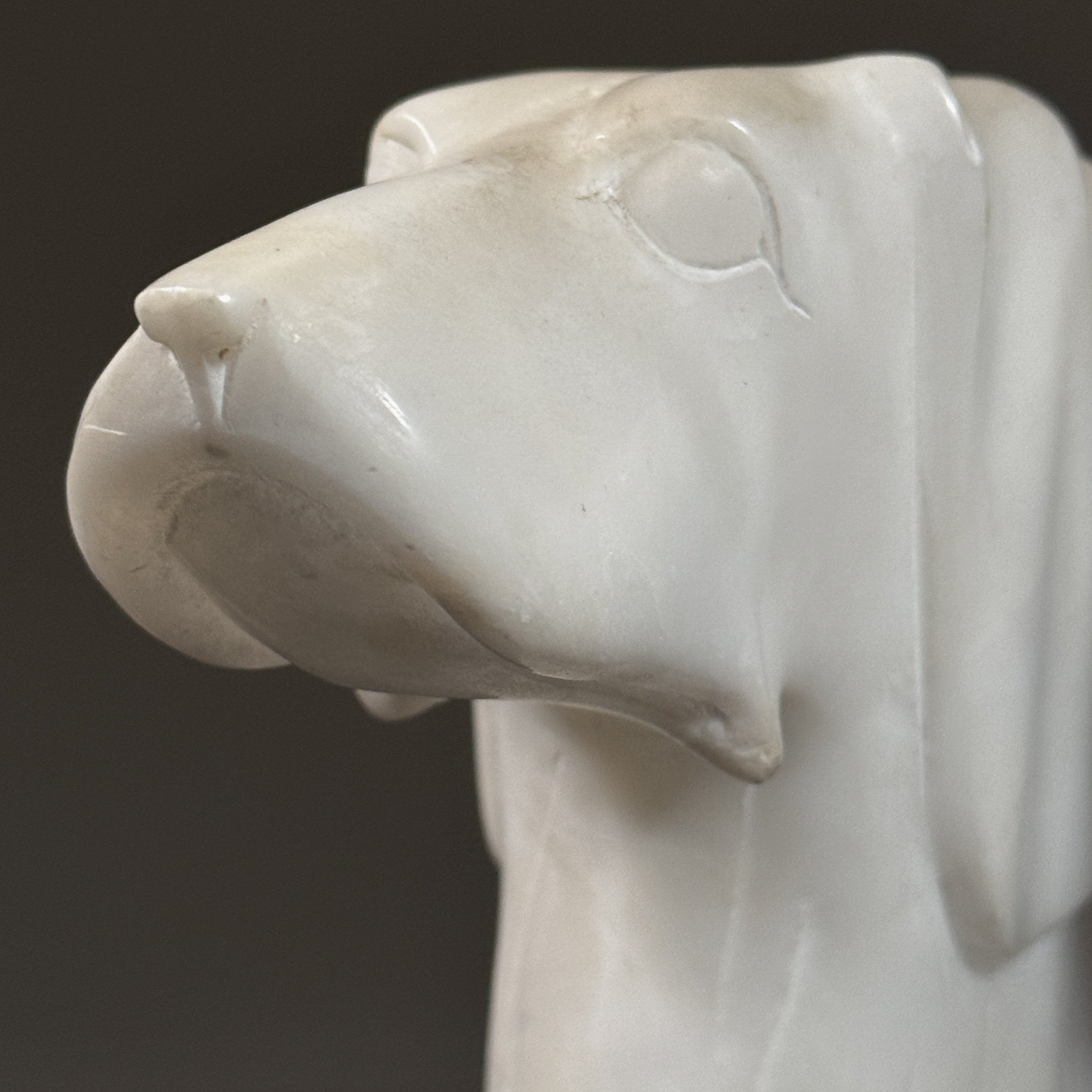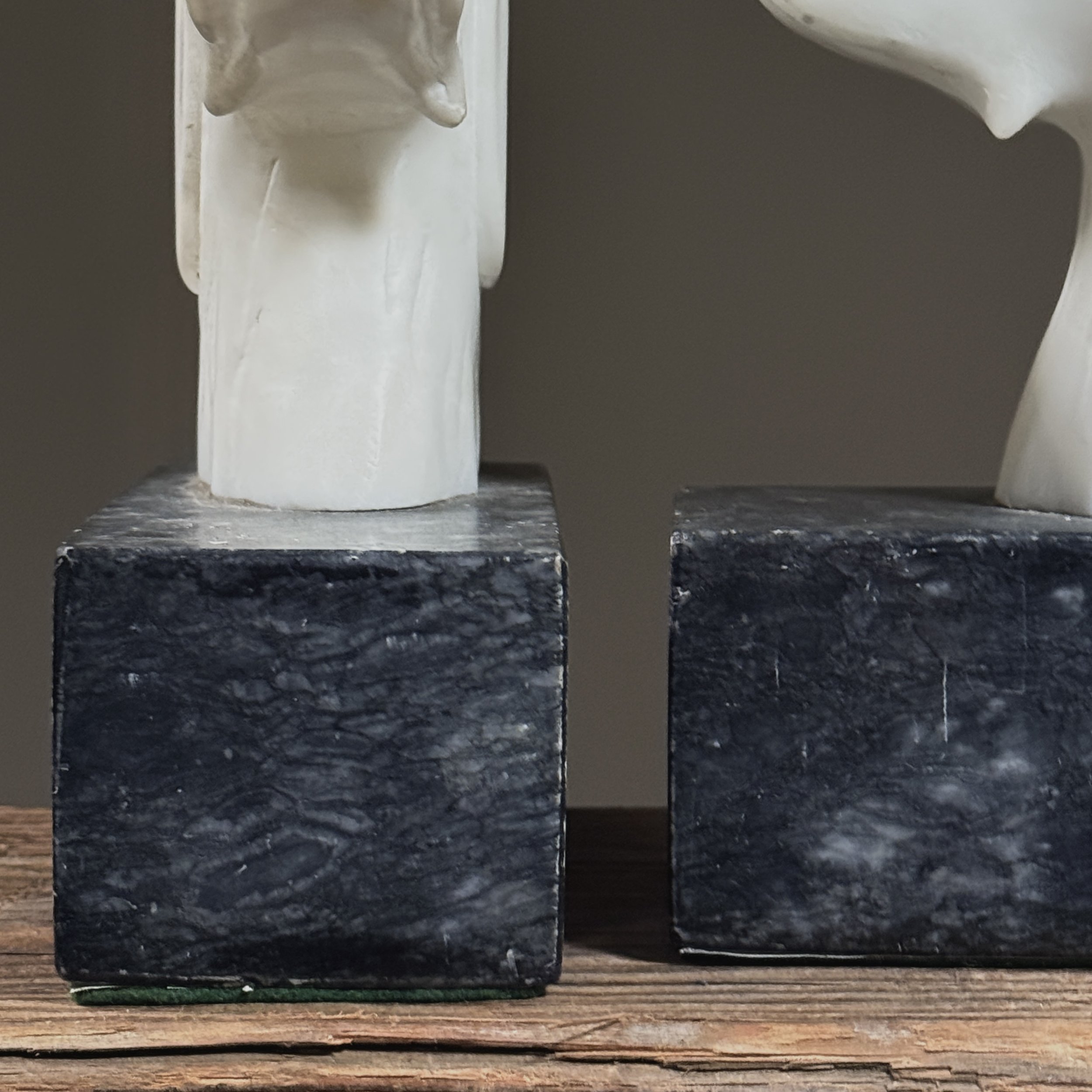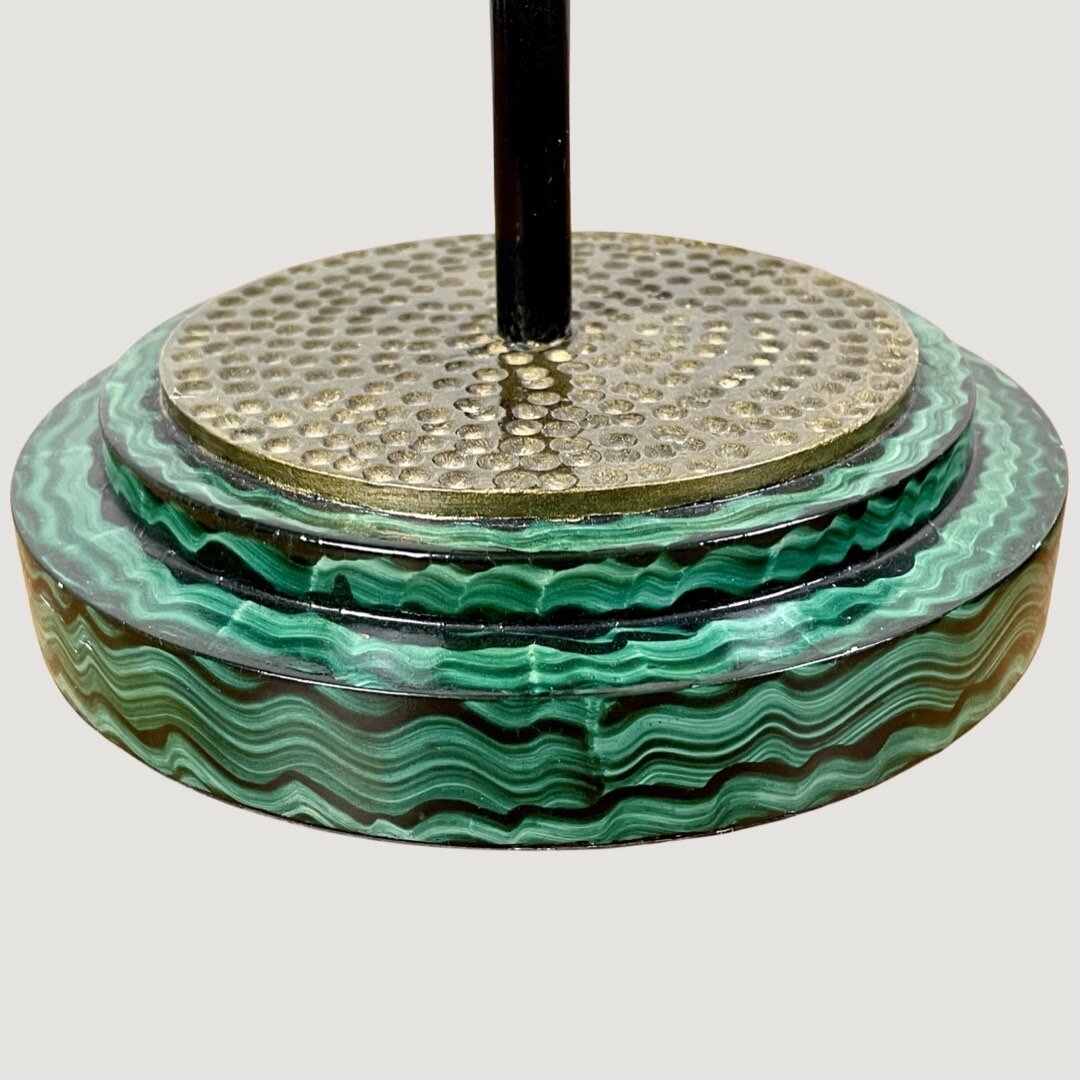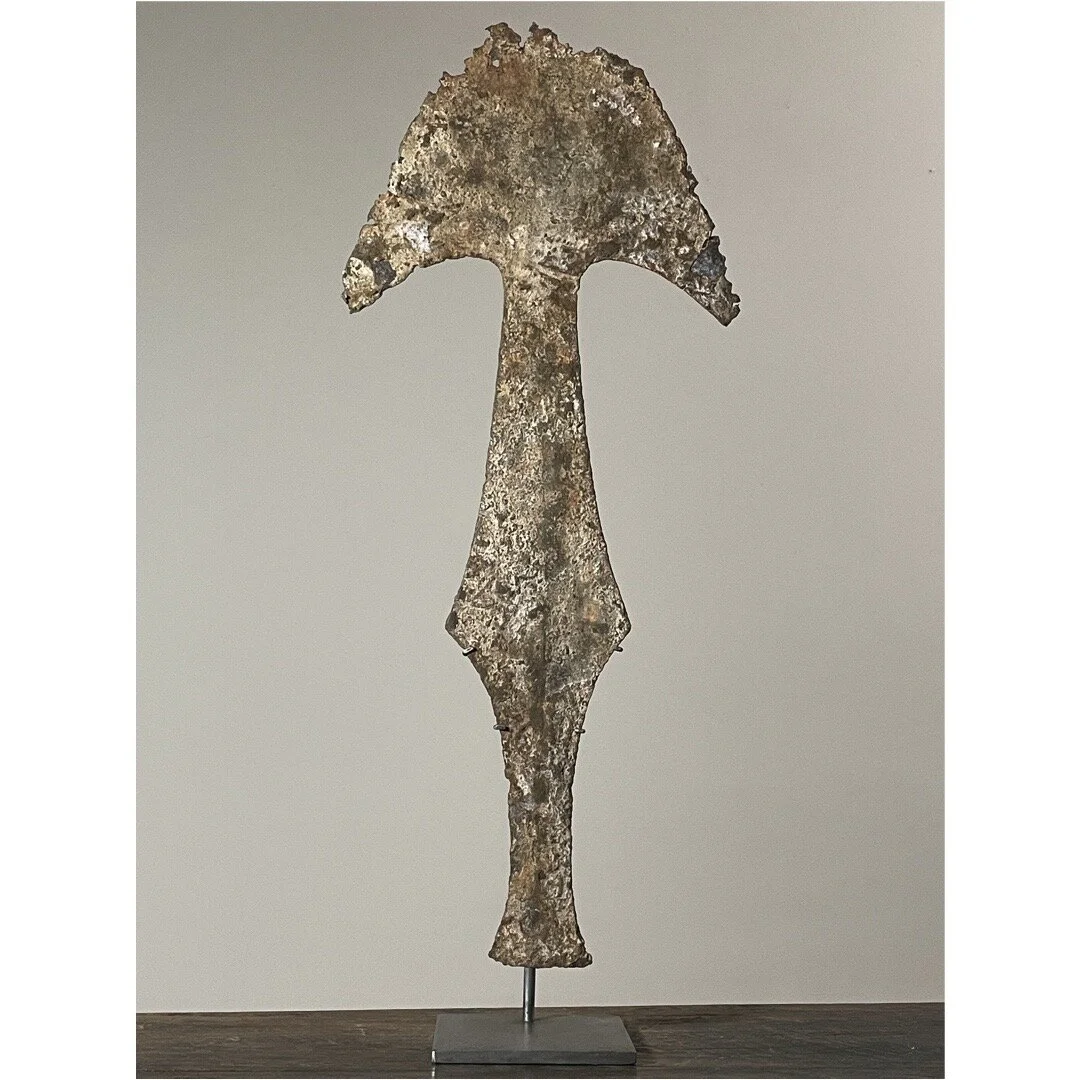 Image 1 of 6
Image 1 of 6

 Image 2 of 6
Image 2 of 6

 Image 3 of 6
Image 3 of 6

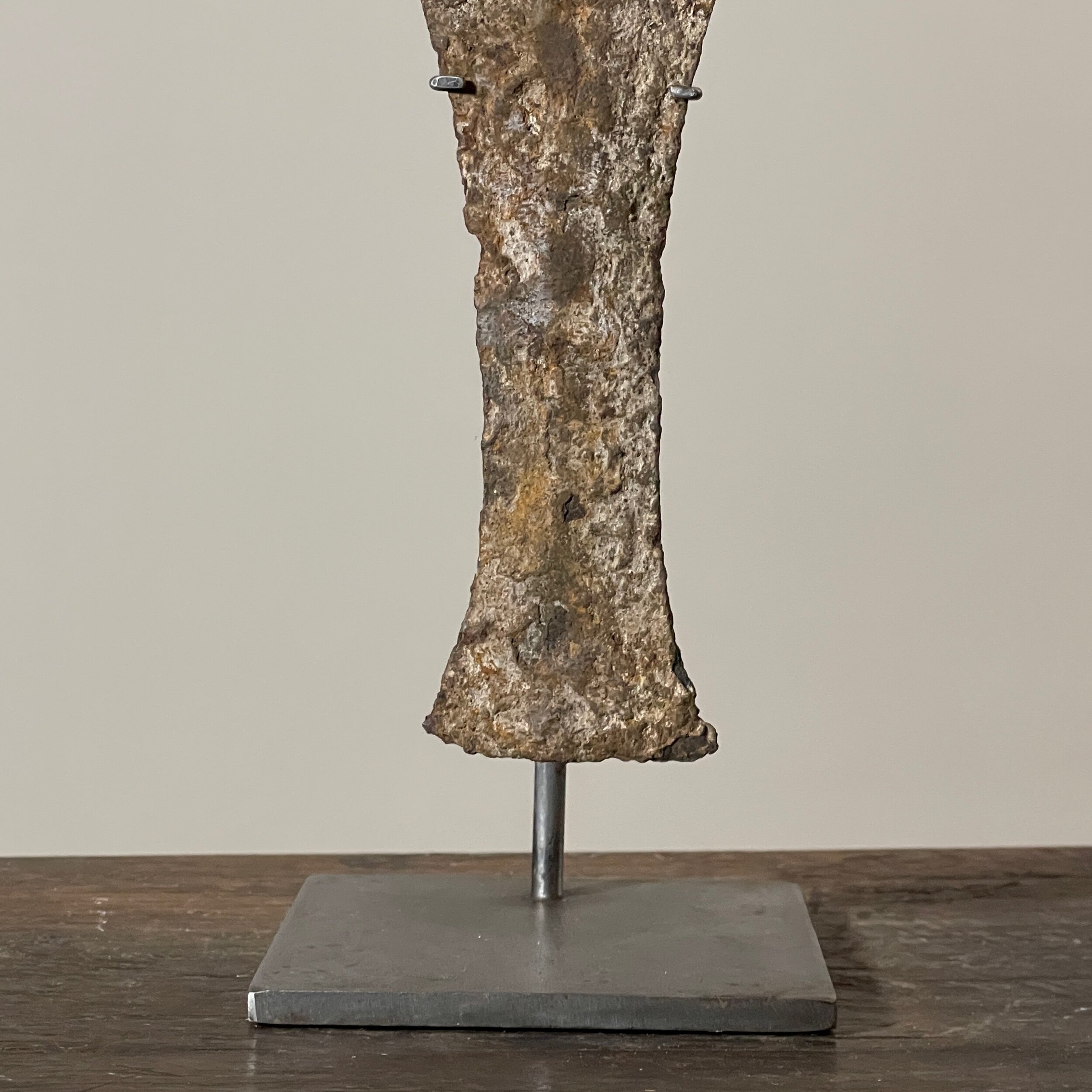 Image 4 of 6
Image 4 of 6

 Image 5 of 6
Image 5 of 6

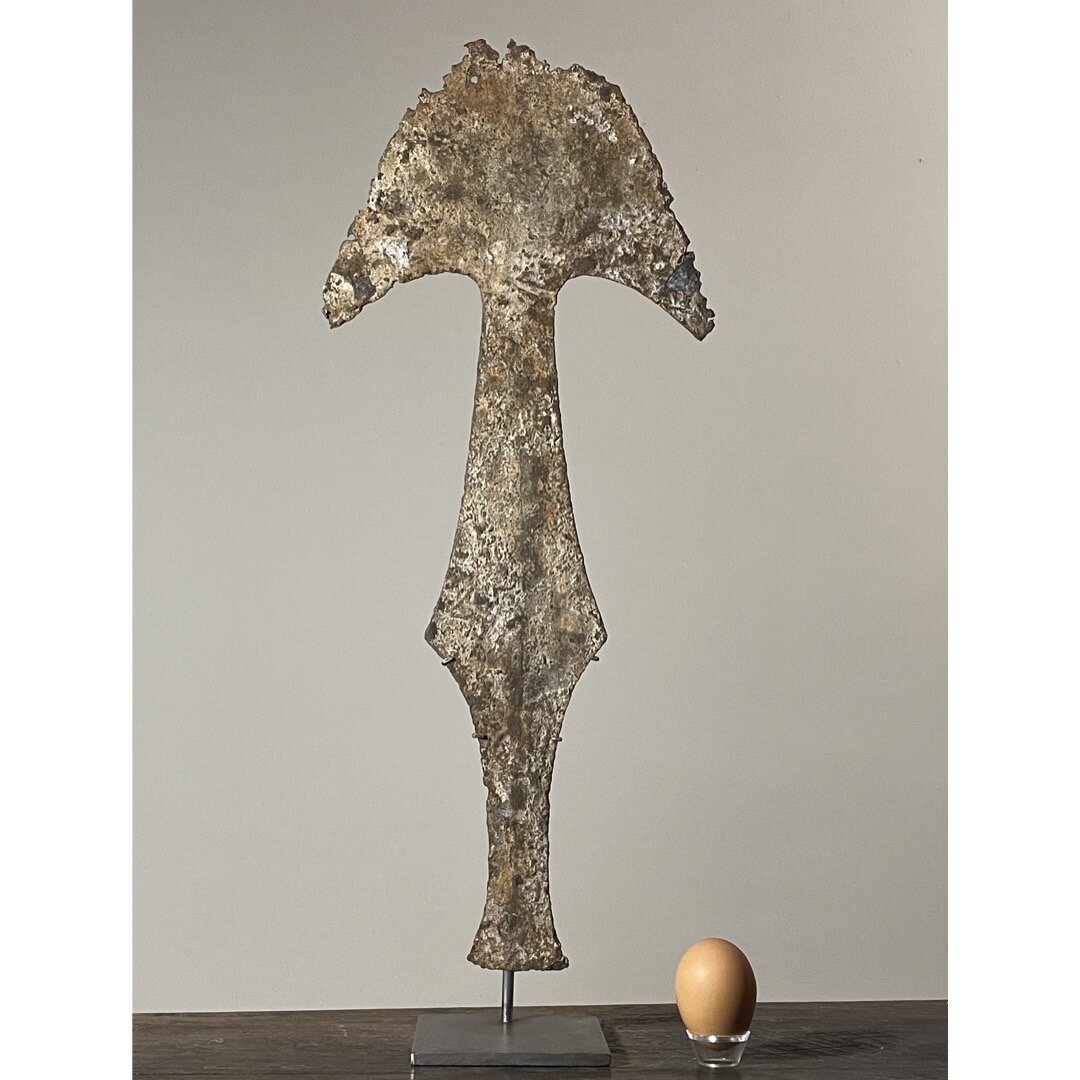 Image 6 of 6
Image 6 of 6







Antique African (Gabonese) Iron Blade Currency on Stand
Antique Gabonese Iron Blade Currency on Stand. Heavily patinated African forged iron blade currency. Steel stand was specially designed for the blade. In fair condition with age and patina throughout. Base is in good condition with wear conducive with age.
Size (including base): 22”H x 9”W x 4”D
Provenance: Estate of Professor Philip Gould, NYC; Exhibited "Africa's Iron & Copper Currencies", Institute of African Studies, Columbia University, March 2000. Professor of Chinese Art History at Columbia University and Sarah Lawrence College, Professor Philip Gould was a passionate collector of African Art, and curated numerous museum and gallery exhibitions from his personal collection.
While implements such as hoes, throwing knives and other weapons serve a utilitarian function, in some cases these objects were also used as currency. Fabricated from copper, bronze, iron and brass, these objects constitute some of the most dramatic and varied of African currency forms. Hoe money came in the shape of a heart, spade, paddle, teardrop, trowel, anchor or blade. In fact, the shapes began to overlap the objects classified as knives or blades. Hoe money varied in value, but most often it was used as bridewealth. Bridewealth is the exchange of currency or valuable goods and services to acknowledge all that the bride brings to her husband and his family, including the hope of descendants. Hoe money was also frequently reformed into other objects or implements as needed.
Antique Gabonese Iron Blade Currency on Stand. Heavily patinated African forged iron blade currency. Steel stand was specially designed for the blade. In fair condition with age and patina throughout. Base is in good condition with wear conducive with age.
Size (including base): 22”H x 9”W x 4”D
Provenance: Estate of Professor Philip Gould, NYC; Exhibited "Africa's Iron & Copper Currencies", Institute of African Studies, Columbia University, March 2000. Professor of Chinese Art History at Columbia University and Sarah Lawrence College, Professor Philip Gould was a passionate collector of African Art, and curated numerous museum and gallery exhibitions from his personal collection.
While implements such as hoes, throwing knives and other weapons serve a utilitarian function, in some cases these objects were also used as currency. Fabricated from copper, bronze, iron and brass, these objects constitute some of the most dramatic and varied of African currency forms. Hoe money came in the shape of a heart, spade, paddle, teardrop, trowel, anchor or blade. In fact, the shapes began to overlap the objects classified as knives or blades. Hoe money varied in value, but most often it was used as bridewealth. Bridewealth is the exchange of currency or valuable goods and services to acknowledge all that the bride brings to her husband and his family, including the hope of descendants. Hoe money was also frequently reformed into other objects or implements as needed.
Antique Gabonese Iron Blade Currency on Stand. Heavily patinated African forged iron blade currency. Steel stand was specially designed for the blade. In fair condition with age and patina throughout. Base is in good condition with wear conducive with age.
Size (including base): 22”H x 9”W x 4”D
Provenance: Estate of Professor Philip Gould, NYC; Exhibited "Africa's Iron & Copper Currencies", Institute of African Studies, Columbia University, March 2000. Professor of Chinese Art History at Columbia University and Sarah Lawrence College, Professor Philip Gould was a passionate collector of African Art, and curated numerous museum and gallery exhibitions from his personal collection.
While implements such as hoes, throwing knives and other weapons serve a utilitarian function, in some cases these objects were also used as currency. Fabricated from copper, bronze, iron and brass, these objects constitute some of the most dramatic and varied of African currency forms. Hoe money came in the shape of a heart, spade, paddle, teardrop, trowel, anchor or blade. In fact, the shapes began to overlap the objects classified as knives or blades. Hoe money varied in value, but most often it was used as bridewealth. Bridewealth is the exchange of currency or valuable goods and services to acknowledge all that the bride brings to her husband and his family, including the hope of descendants. Hoe money was also frequently reformed into other objects or implements as needed.


